About Full Speed Ahead
“Full Speed Ahead (FSA) produces world-class bicycle components for road cycling and mountain biking and we support many of the world’s leading road and mountain bike teams.” This is according to the FSA’s company page, which doesn’t read into the company’s beginnings and later history. But, one thing is for certain, FSA has been manufacturing top-notch bicycle components for many years.
FSA SL-K Modular Adventure BB386EVO Crankset with Subcompact Chainrings
The inspiration for this crank belongs to 3T’s Dave Koesel. In brief, Dave and later FSA realized that a 50 x 11 gear is something the vast majority of all riders will use for less than one percent of their riding. In the case of gravel cycling, even less. Sugino has had a crankset on the market for some time with 46 / 30 chainrings (see our review of that crankset here), but most people in the bicycle industry hadn’t figured out the massive possibilities between lower gears and gravel / adventure cycling.
Dave Koesel, while still the road product manager at Felt, approached FSA and others to see if they’d produce a subcompact crankset in carbon. It took FSA to realize the potential of smaller gears.
“SL-K modular BB386EVO is the latest FSA crankset for gravel, adventure or road use. Thanks to the adaptable BB386 EVO 30mm spindle, this modular system will fit a wide variety of frames with a range of BB standards; 52/36 50/34, 48/32 or 46/30 are the offered ring combinations.”
This review centers around the 46 / 30 chainring pairing with 170mm arms, and FSA’s BB386EVO English thread bottom bracket.
Features of the FSA SL-K Modular Adventure BB386EVO crankset include:
- Hollow carbon fiber arms with UD finish.
- Forged AL7050 BB386EVO spindle.
- Direct mount outer chainring and 90 BCD (bolt circle diameter) inner chainrings.
- Chromoly chainring bolts.
- Fits Shimano and SRAM 10-11 speed systems.
- Q-Factor of 146mm.
This crank is a little different from the norm, being a four-arm design. Shimano and Campagnolo have both switched to four-arm crank designs, but those companies still rely on the traditional method of chainring mounting – meaning, the chainrings mount to the arms of the crankset.
With an FSA direct-mount crankset, and this applies to a single or double chainring setup, the largest chainring mounts directly to the crank using a spline type interface.
In the case of FSA’s double chainring configurations, the smaller chainring mounts directly to the rear of the bigger chainring. Pictured above, you can see the FSA 30 tooth small chainring attached directly to the 46 tooth big chainring.
FSA’s direct mount design isn’t the first of its kind, but it effectively eliminates all of the compatibility issues with BCD’s (aka bolt circle diameters), and thus provides previously unattainable possibilities for smaller inner chainrings.
The larger of the two chainrings is relatively simple to remove and substitute for another size, provided you possess FSA’s E0611 tool, a 10mm hex wrench and an appropriate torque wrench. FSA has kindly produced this video which demonstrates that process.
With this said, this particular crankset is optimized for two chainrings, and thus I did not test it in a single chainring configuration.
Manufacturers are renown for telling fibs about component weights, usually with a plus or minus two percent fudge factor. But, FSA is spot on and under their listed production weight of 617 grams. My decently accurate gram scales read 579.5 for both crankarms, including all fixing bolts – no tricks. Chapeau FSA!
The bottom bracket paired with the FSA crankset is the company’s BB386 crank to BSA frame model, with stainless steel bearings. BSA = English thread / 68mm. For those so inclined, FSA also manufactures a high zoot ceramic bearing version of this bottom bracket.
Featuring a titanium anodized finish on the bottom bracket cups, the uber-lightweight center sleeve of the bottom bracket is designed with Di2 electronic shifting in mind. Internal Di2 cables pass neatly over the top of the bottom bracket shell, with room to move sans interference with the crank axle.
FSA list a claimed weight of 50 grams for the bottom bracket, but I suspect this may be an error, and possibly for a different model. The review sample weighed in at 89 grams with the included wave washer. This weight is on-par with similar bottom bracket designs.
Bottom Bracket and Crankset Installation
To install this variant of FSA’s bottom bracket, you will need FSA’s Mega EVO BB Cup Tool. If you’re a cyclist who does their own wrenching, add another bottom bracket tool to your collection – I own at least five bottom bracket tools.
It always pays to start with a clean bottom bracket shell. The one pictured above belongs to my Ritchey Breakaway Gravel Travel Bike (Generation 1). This bike is equipped with SRAM’s eTap system, so no worries about routing wires across the top of the bottom bracket.
In case you were wondering, a liberal coating of Park Tool’s ASC-1 anti-seize compound was applied to the threads of the frame’s titanium bottom bracket shell.
Next, thread the bottom bracket cups into the shell and torque to spec using the FSA BB cup tool.
Apply grease to the contact points on the crank’s axle. These contact points are where the axle touches the inside of the bottom bracket cups, and where the driveside crank is affixed.
According to FSA’s documentation, one installs the supplied wave washer between the non-drive side crank and the plastic bearing cover of the bottom bracket. However, the review sample came with an additional plastic spacer (see above), which we sandwiched between the wave washer and bearing cover. When I say “we”, I’m referring to my friend Dr. Pain. He assisted with the installation and happens to own his own copy of this crankset. I followed his lead on this – sometimes you have to improvise – crank function has not been affected.
Above, note the liberal application of grease on the axle’s connection points.
Finally, tighten the 10mm fixing bolt of the crank’s drive side using an appropriate torque wrench.
How does the FSA SL-K Modular BB386EVO Adventure crankset perform?
Cranksets can be difficult to review. You install them on your bicycle and they perform an important part of your drivetrain – transmitting the power of your legs into the chain. Most people give them no thought until they upgrade, or fail. Definitely the unsung heroes of your bicycle’s drivetrain.
For this review, I was fortunate in that I had two FSA SL-K Modular BB386EVO Adventure cranksets at my disposal. The Orbea Terra gravel bike, one I put through the wringer for several months, came fitted as original equipment with the same FSA crank and 46 / 30 chainrings.
The Orbea and its FSA crankset saw some extra heavy use. Most notably, they were part of my equipment for the 2017 Dirty Kanza 200. Additionally, the cranks and bike racked up some serious miles / kilometres in training.
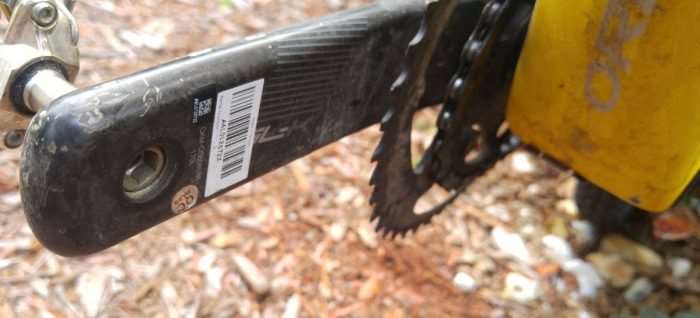
When Shimano’s Di2 system is adjusted properly, it shifts perfectly, every time. But the key to good shifting on a double chainring setup is pins and shifting ramps, which when appropriately machined make for fast and repeatable shifts in both directions – on mechanical or electronic front derailleurs.
The FSA chainrings shifted flawlessly, even in trying conditions. Gravel rides and races are not kind on equipment; mud, crud, sludge, water and grime hammer the drivetrain, and one’s chainrings have to weather all of this abuse.
I don’t advise this, but under load, shifts from the small to the big chainring were perfect, and shifts in the opposite direction, equally as flawless. Note, I always soft pedal when dropping from the big chainring to the small chainring.
In my opinion, subcompact chainring pairing is the epitome of perfection if your gravel ride or race features a lot of steep climbs. Or, if you’re like me, you favor a higher cadence for climbing. Paired with an 11-32 cassette, you can scale virtually any climb, seated, sans the large gaps often associated with a cassette designed for a 1x drivetrain.
FSA has really nailed it with this crankset.
There were at least two occasions at the 2017 Dirty Kanza 200 when I was glad to have a 30 x 32 low gear at my disposal.
- When I scaled the tough, brick climb into Madison, Kansas. Remember, conserve. With about 50 miles under your belt, there is still a long way to go!
- When I scaled the “Beeyotch climb”, which is steep, somewhere around 20% at its worst. As others walked, I rode on by.
Additionally, the crankset was quiet. No annoying clicking or ticking sounds over time.
FSA wisely cover much of this crank in a clear plastic mylar type material, which offers a good measure of protection from rock strikes. However, they don’t cover the ends of the crank arms, which is the one location that takes a thorough beating. The driveside crankarm on this particular pair has a few beauty scars. A minor quibble, but worthy of mention.
Considering I rode the pants off this crankset and the one fitted to my Gravel Travel Bike, they have held up well over the space of approximately five months. That includes the bottom bracket. Absolutely zero issues from FSA’s BSA BB386EVO unit, even after a few dunkings in creek crossings.
Summary
If you are looking for a carbon crankset that caters to low gears / multiple chainring options using just one crankset, the FSA SL-K Modular Adventure BB386EVO crankset should be on your purchase list. The crank is well made, durable and I think, aesthetically pleasing. The Q-factor is not wide at 146mm, which aligns with some of Shimano’s offerings.
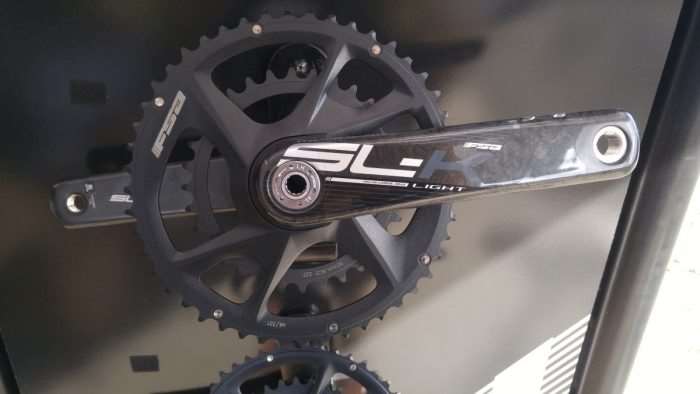
My only concern is the future availability of chainrings, but FSA has always done a marvelous job of making spare parts available. In fact, I plan to purchase a 36 tooth inner chainring soon, for those rides and events that don’t demand the low ratio of a 30 tooth inner chainring.
At $US 400.00+ for the crankset and chainrings, and $US 54.99 for a bottom bracket, this combination isn’t cheap, but when you consider the crank’s versatility, durability, sublime shifting and low weight, I’m of the opinion it is well priced.
| FSA SL-K Modular Adventure BB386EVO Crankset – 46 / 30 – 172.5mm |
| Click the Link to BUY from Amazon |
| FSA SL-K Modular Adventure BB386EVO Crankset – 46 / 30 – 175mm |
| Click the Link to BUY from Amazon |
| FSA SL-K Modular Adventure BB386EVO Crankset – 48 / 32 – 170mm |
| Click the Link to BUY from Amazon |
| FSA SL-K Modular Adventure BB386EVO Crankset – 48 / 32 – 172.5mm |
| Click the Link to BUY from Amazon |
| FSA SL-K Modular Adventure BB386EVO Crankset – 48 / 32 – 175mm |
| Click the Link to BUY from Amazon |
Finally, be sure to view our article on FSA’s electronic WE shifting system.


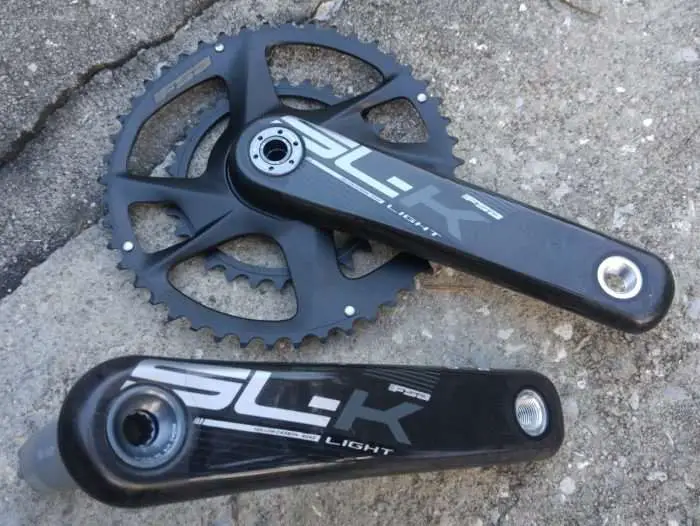
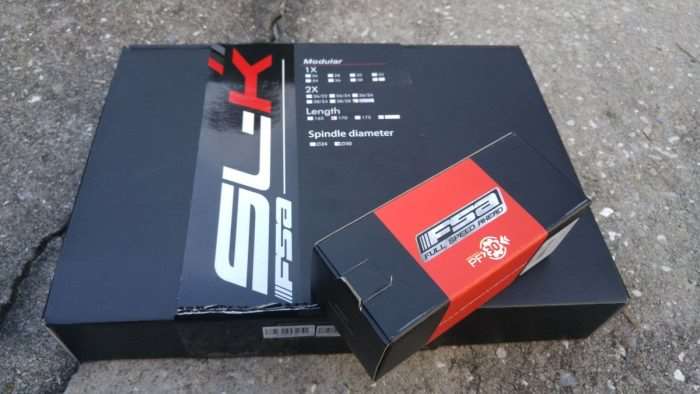
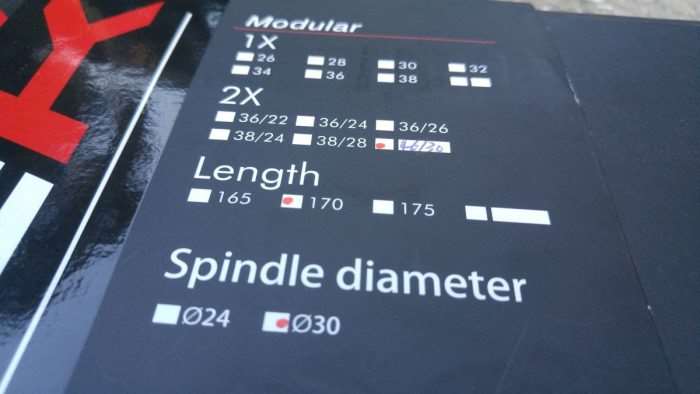
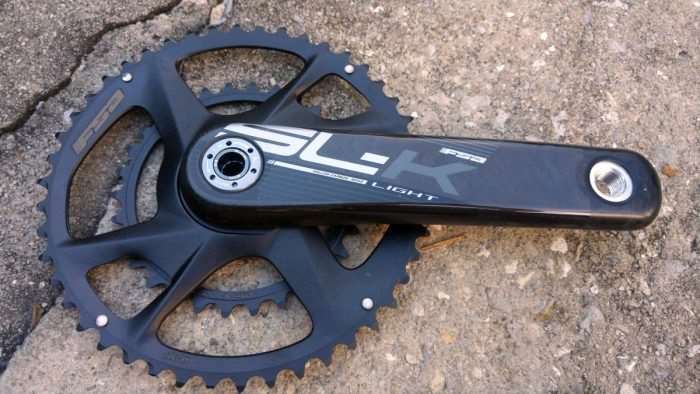
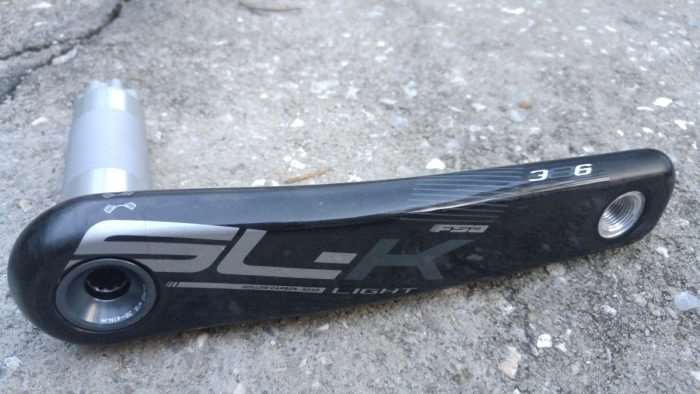
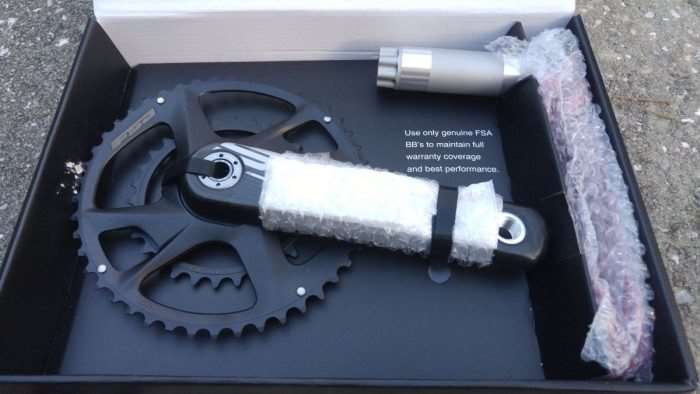
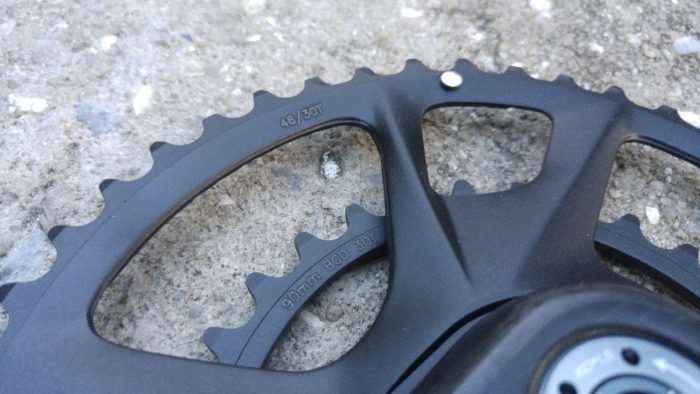
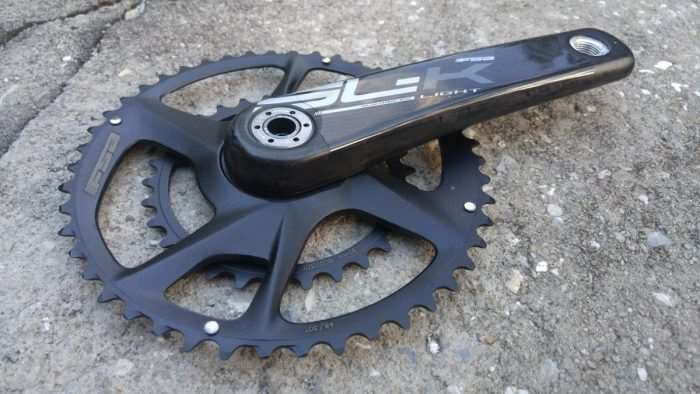
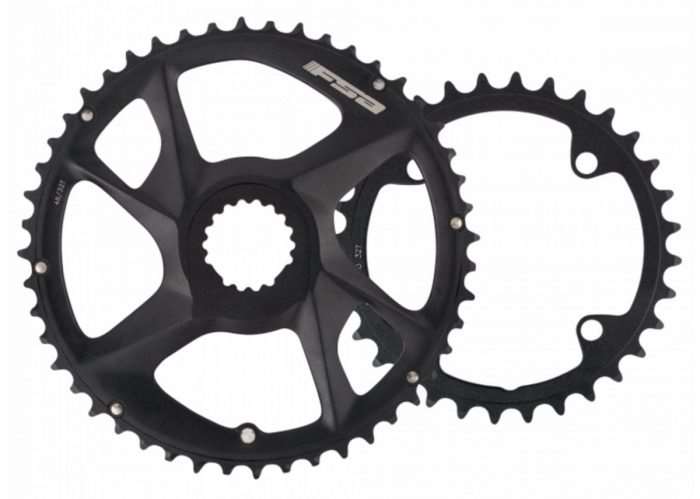
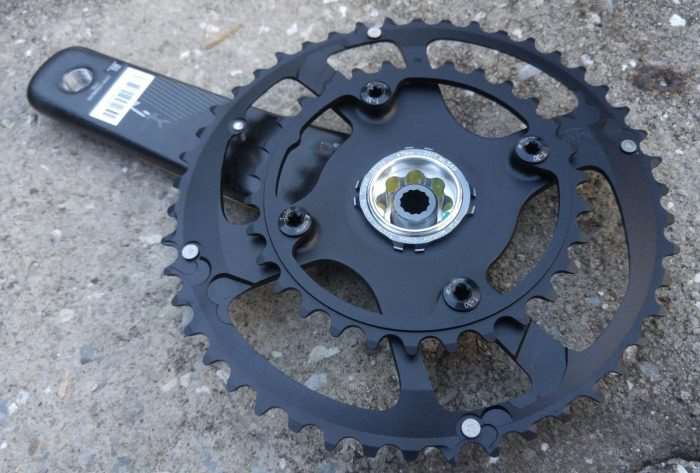
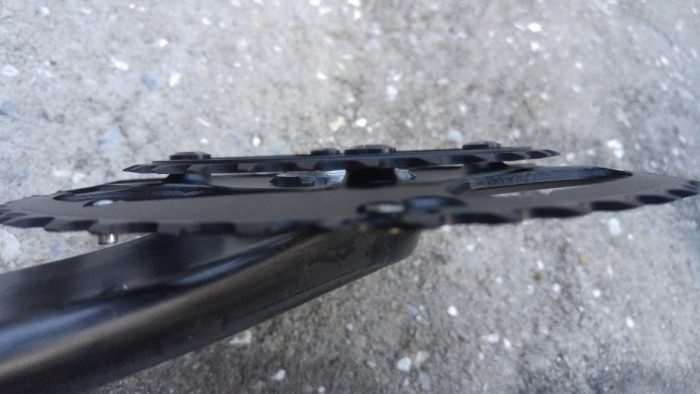
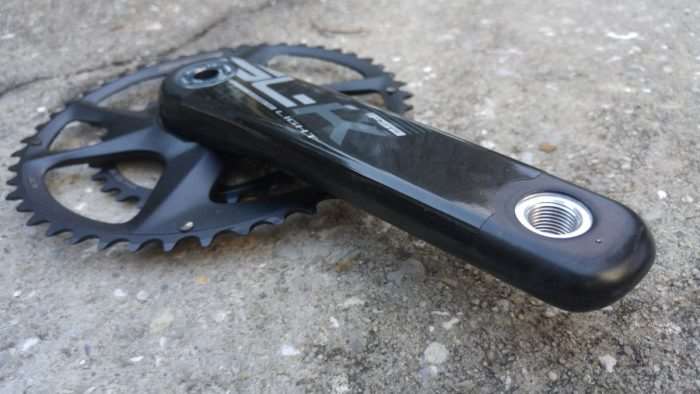
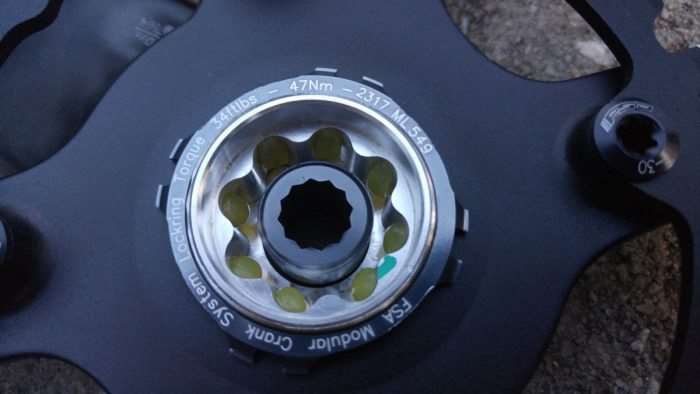
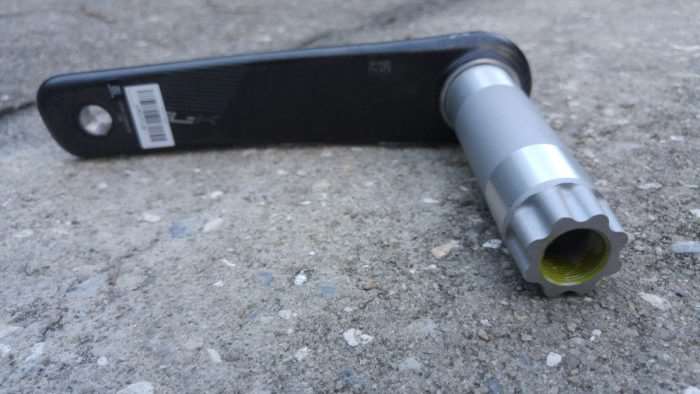
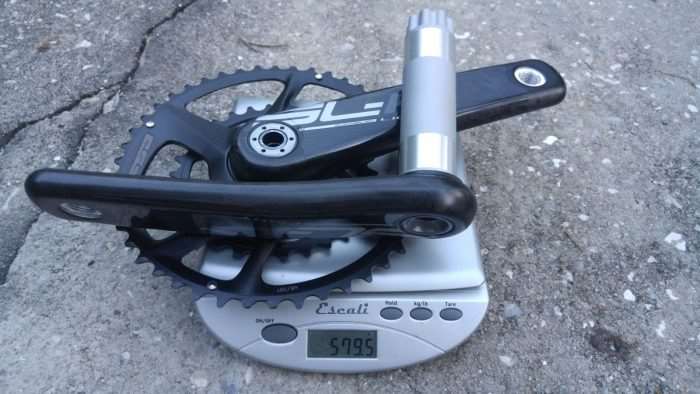
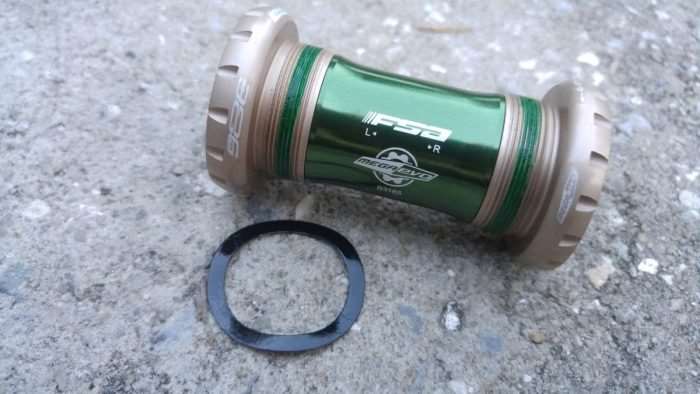
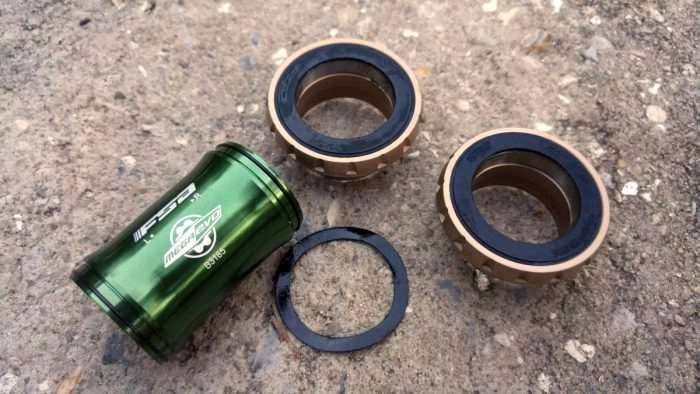
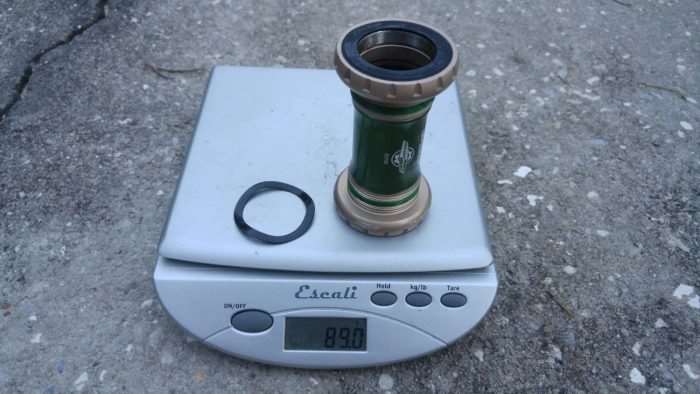
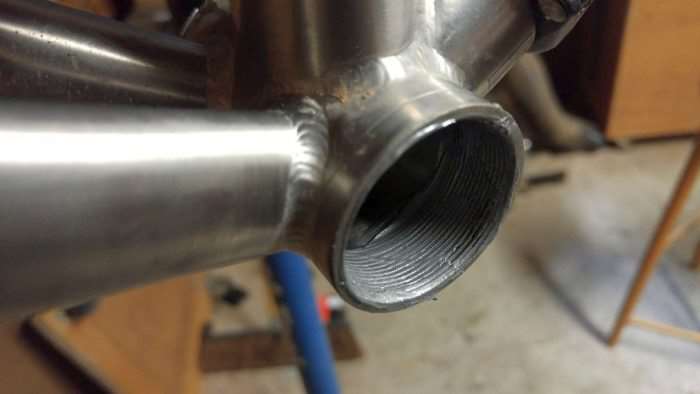
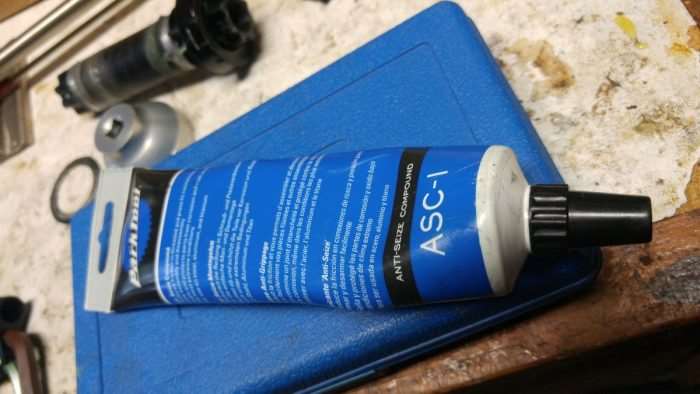
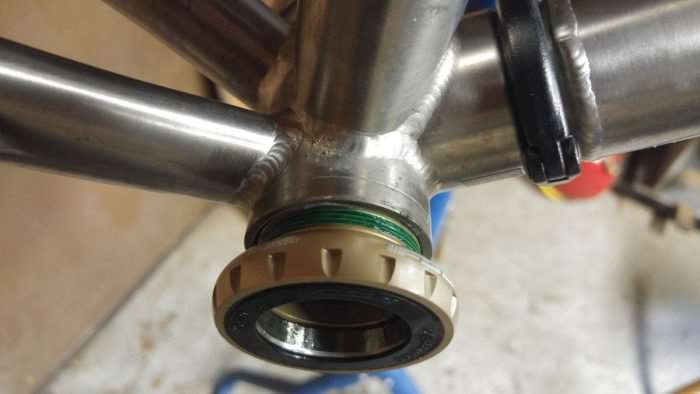
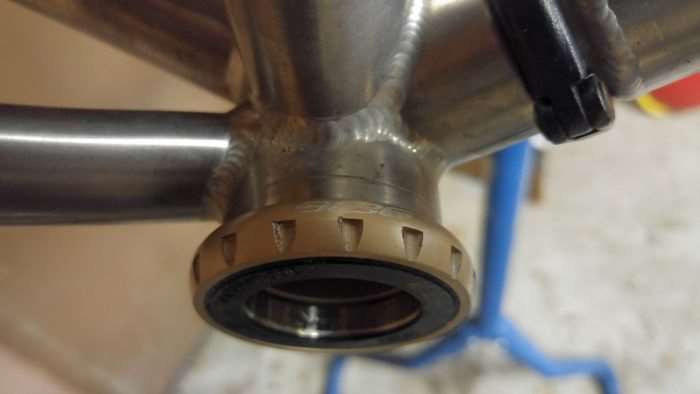
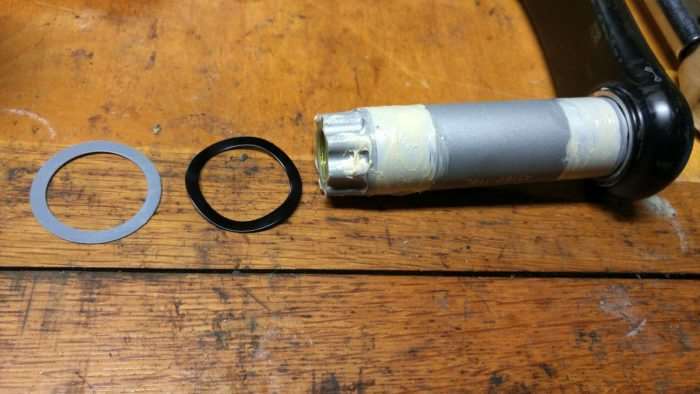
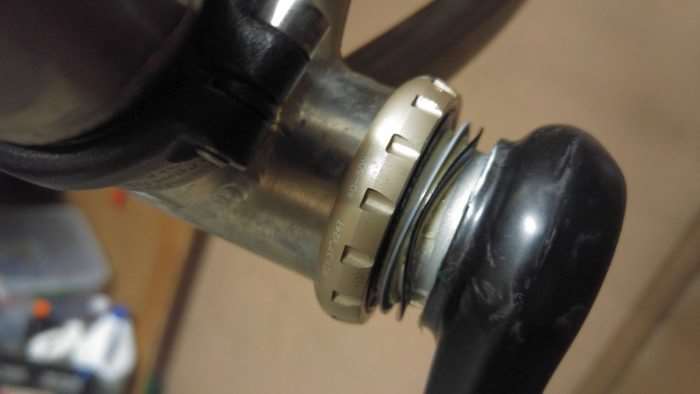
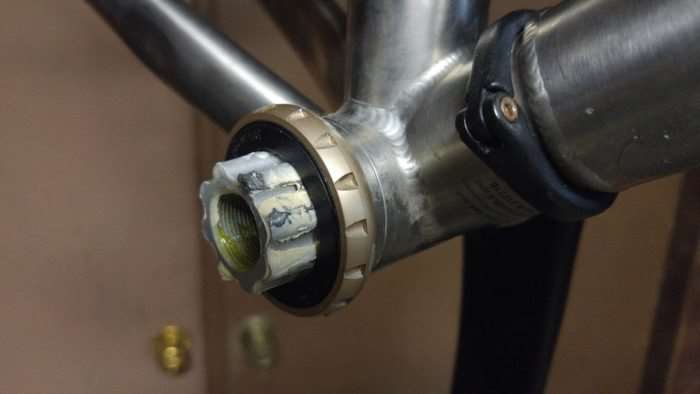
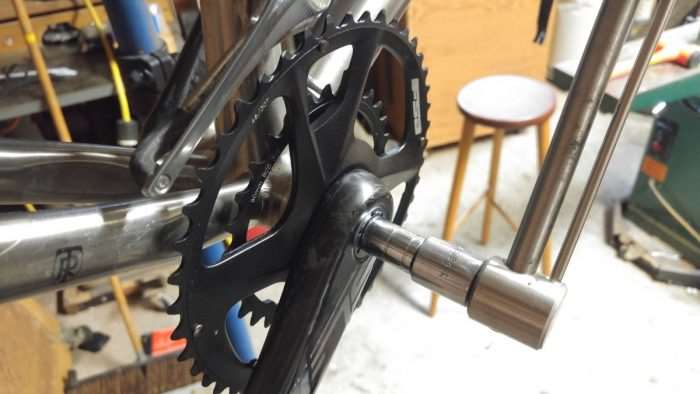
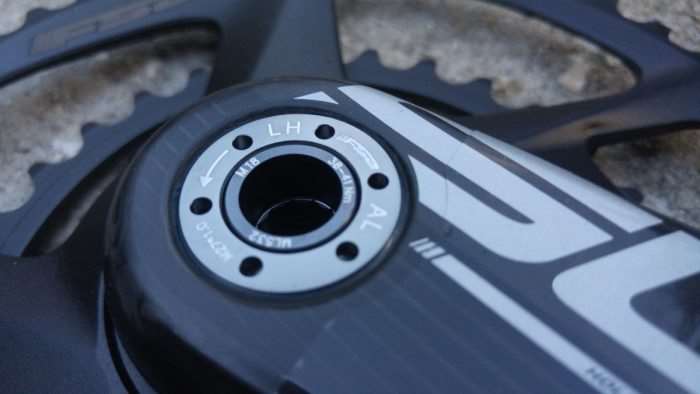
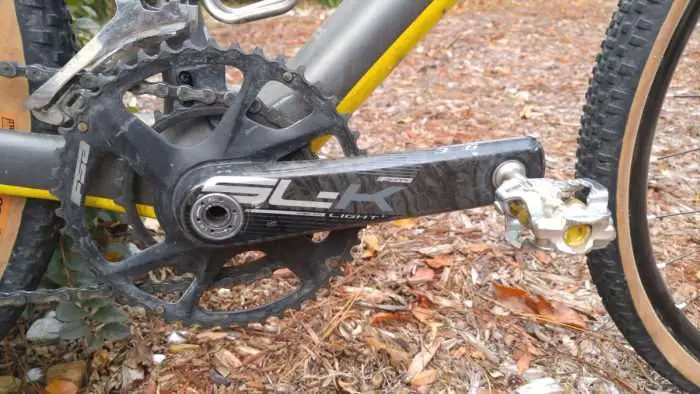
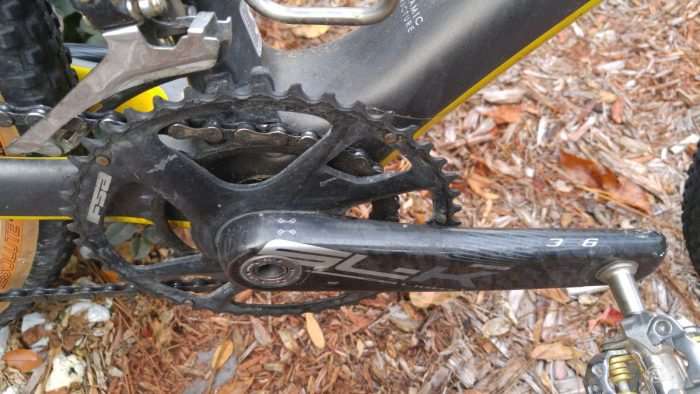
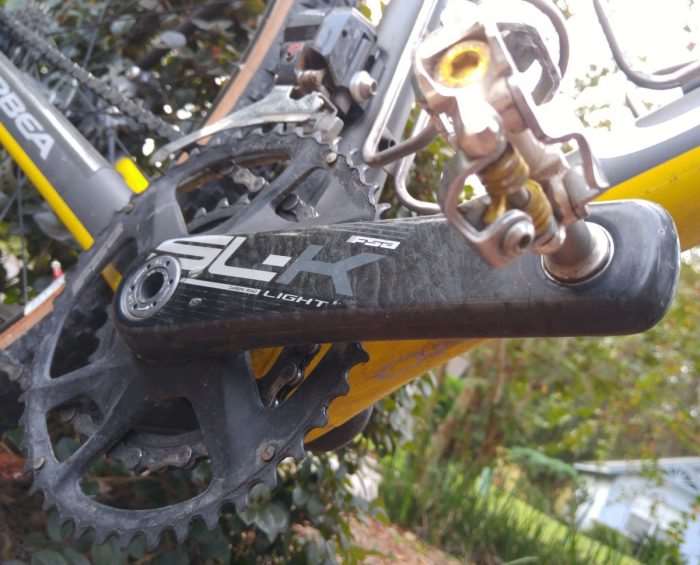
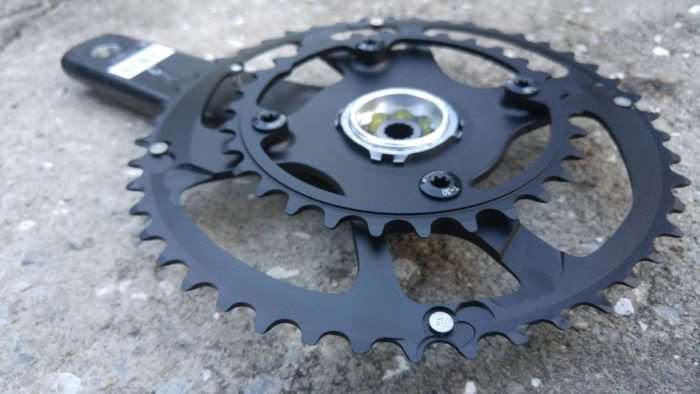
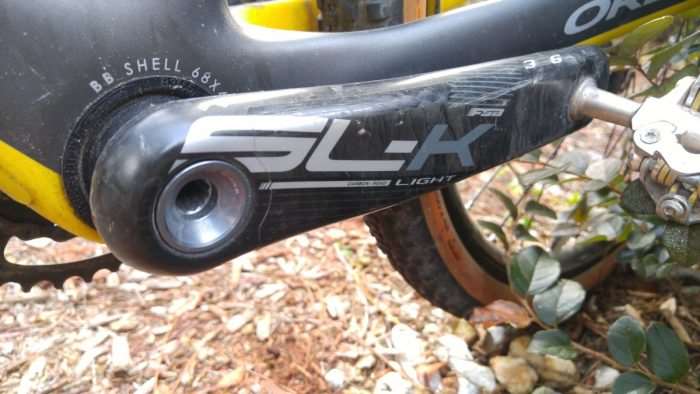
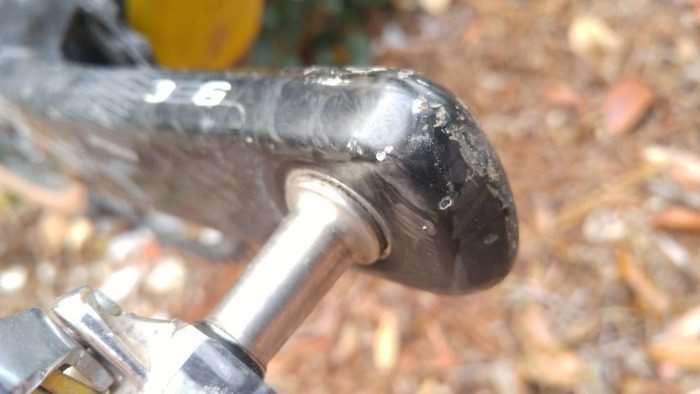
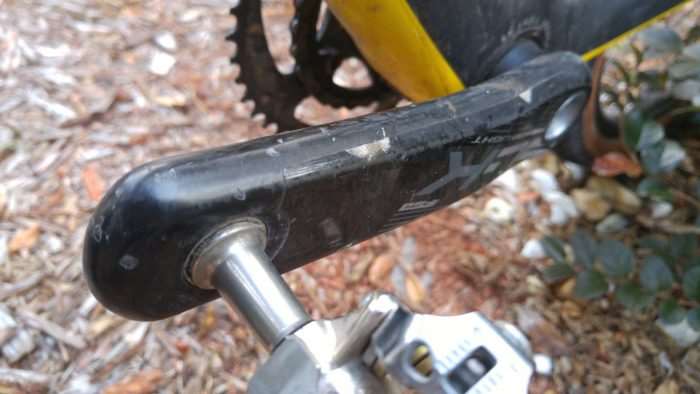
I have one of the other FSA adventure cranksets and last time I looked only 48×32 & 46×30 rings were available, interesting given the box illustrated. If MTB size rings could be had that wouldn’t hurt. The FSA BB386 tools were impossible to come by a while back too, and I ended up getting a Unior tool from Germany.
As for the BCD, or lack therof, it certainly solves the problem of people buying spares anywhere except direct from FSA. 🙁
Note that my FSA box had 46/30 written in by hand, so mine may not be the final version. I’ve had this crankset for some time.
Hey JOM,
I’ve been running a compact 50-34 Power2Max FSA SL K-Lite crankset and after reading this article and seeing your photos of the crank shaft and how this set mounts I’m beginning to think that they share the same arms & crank shaft. Do you have any thoughts on this? It would be cool if it was possible to swap the current spider for one of these 46-30s and try it out.
https://www.power2max.com/en/product/type-s-road-fsa-k-force-light-bb386evo-with-crank-set/
Keep up the good work, love browsing the site!
Rob
Do you get any creaks from the BB or crankarm/chainring interface?
What is the Q Factor? This is more important than the weight, and has gotten ridiculously wide of late.
Christian, did you read the review? Q-factor is listed (146mm) and also the no noise factor.
Is this crankset spec’d On any current production bikes?
Yes, the Orbea Terra. I mentioned this in my review – you can see a few photos of it on that bike. Also, that bike review is linked in this one.
Thanks!
They’re also on Felt’s VR2.
What about us poor blokes with PF30 BB’s? Are we SOL?
When it comes to dealing with the cluster #€&× of bottom brackets (calling them standards is insulting) the folks at Wheels Manufacturing usually have a very well made solution. Most of the time in different flavors (enduro bearings, ceramic bearings, angular contact bearings, …). I have no affiliation with them other than being a happy customer. They have very thorough charts, videos and instructions on their website so you can look up the type of BB and then you’ll see their option which cover most popular cranks available.
https://wheelsmfg.com/bottom-brackets.html
BB386EVO cranksets were designed to work well in BB30 and PF30 bottom brackets. You just need spindle spacers, which FSA sells for very cheap.
The cranks should fit PF30 frames okay provided you can source the correct spacers. What they won’t fit are BB8x/BB9x which are wide shells with press-in bearings (not cups) for 24mm axles, mostly on Treks, IIRC.
Or you could use certain Cannondale or SRAM BB30 cranks with a MTB spider; many of their cranks have removable spiders which can be had from a number of sources, not just the OEMs.
My Orbea Terra review bike used these cranks with the PF30 standard.
Thanks! My Chebacco has PF 30 and I’m currently running the Ultegra crank which I believe is 24mm. So maybe all I need is to source the correct BB shell. It get’s complicated with all of the options.
Great review – as per usual. I note that redkitprayer.com also released a review of this crank today as well. It must be trending!
To me, 46/30 is still basically a racing configuration (for gravel); it’s not really “adventure”. As an older (56), heavier (100kG) rider, I would like to see lower ratio combinations like 42/26 or even 40/24. These can be paired with a cassette having closer spacing, while maintaining a decent lowest gear, and allowing for most shifts to be made while staying on the same front ring.
Martin, check out the review we did of the White Industries MR30 crankset… you can customize that completely.
https://www.gravelcyclist.com/bicycle-tech/review-white-industries-mr30-crankset-1x-or-2x-and-low-gear-options/
Yes, thanks to GC for being on top of the White Industries offerings! That is probably what I would buy right now. My comments were intended more for general interest; I didn’t mean to throw shade at GC.
I agree with Martin regarding chainwheel sizes, especially for “adventure” use. My Sequoia came with 48×32 rings and a cassette starting with 11,12,13T cogs, all three of which are useless to me on dirt. The replacement cranks will have either 40×24 or 38×26 rings; I’ve never needed a top gear over ~90″ offroad, or for touring (aka adventure/bikepacking).
No worries Martin, no offense taken!
Does anyone make a crank arm boot for this particular crank arm? I have a new Terra coming soon with this set up and would like to protect the crank arm ends with the “boot”, but having the 170mm crank arm I assume the RaceFace boot will not be compatable.
Anthony, I’ve had success in the past using frame protector type material / clear mylar with a sticky back.
Any chance of them launching a cheaper non carbon crankset in 46/30?
Deepak, FSA is offering aluminium cranks, and I am certain they are offering 48 / 32 at the very least. But, poke around on their website or try contacting them directly. Sorry I couldn’t help.
FSA Tempo Adventure:
https://www.bike24.com/1.php?content=8;product=208747;menu=1000,4,29;mid%5B77%5D=1;pgc%5B9976%5D=9977;pgc%5B22%5D=90
Thanks for reviewing this product and for providing the details of installation. I had been working to source a 30/46T crankset while this FSA piece was just becoming available. I finally located one and installed it on my rando bike using an FSA adaptor for the BB30 bottom bracket. This set up has worked well for me. I like this arrangement so much that I have subsequently installed this crankset on my CX bike using the FSA BSA bearing set that you illustrated. A couple hundred miles on the CX bike and several more on the rando. No issues, no complaints.
hi there
wonder iff that Orbea is using a direct mount front derailleur attachment – if so – is it also using a standart Shimano front derailleur made for 50/34 cranks
I recon you are using a clamp style front Di2 on you Ritchey Ti
thanks
Martin
Hartin, definitely using a clamp style front Etap derailleur on my Ritchey Ti CX rig.
So I have thoughts of making my 2017 Raleigh Roker Comp lighter. I probably am going to go with Shimano hydro levers. I found a Syntace P6 carbon seat post at a smokin deal and the $100 I saved there I thought I would spend on a lighter crank set that I wanted to put on the Roker which was a Shimano 50/34 105. Not being the techy guy do I have to change out my bottom bracket to get this crank to fit my Roker. I was hoping to get this bike dialed in for the Dirty Pecan but might just take my time and get the parts replaced as my wallet/budget can afford it. Are there any other cranks out there that might be mid priced in the 46/30 that I could be looking at for my Roker? tks
Larry, check out the FSA range of cranks. I believe they have some not so expensive 46 / 30 sub-compact crankset options available now. The area of the bike that has the biggest impact with lost weight – wheels and tyres. Converting to tubeless, assuming you haven’t done so already, can make a difference too.
A set of these with 48/32 chainrings are 664g on my digital scales. Not only do smaller chainrings give smaller gears, they also save precious grams! ?
Have to love that! 🙂
Does FSA make a 24mm version that would be a drop-in replacement for Shimano Hollowtech II? My Trek wants to know.
Jayson, if you were running a 46-30, what cassette were you running…the 11-32 mentioned?
Yes, 11-32. Worked like a champ. And, 30 x 32 low gear!
JOM and all,
Anyone out there having trouble with shoe rub on this crankset? I’m having significant rub on the non-drive side (doesn’t happen on the drive side). I’ve completely worn through the clear plastic covering. The contact between the inside of the shoe and the crank arm is so significant that I can no longer use this crank. My cleat position is the same on each shoe. I use the same pedal/shoes on other bikes (TT, two road bikes, commuter, etc.) and I don’t get rub. What could be causing this? Profile of the crank arm? Q-factor? Recessed pedal attachment area (I’m using the provided spacer)? All thoughts are appreciated.
I also had quite a lot of shoe rub on these, switching from SRAM Rival cranks. My problem was on the drive side. Had to adjust cleat accordingly. I’m guessing it’s because of the crank profile which is quite straight, they don’t curve away much from the pedal on their way towards the bb. Moving the cleat towards the inside of the sole did the trick (putting the shoe outwards). Not a problem with road cleats and carbon soles, might not be feasible with SPDs and/or flexier soles.
FWIW, I have similar problems with most external bearing cranksets; they’re relatively high Q plus the arms are quite straight. In my case things are worse on the RHS, where my ankle rubs on or hits the crankarm; I’d prefer the LH crank to be further in, but my ankle doesn’t rub on that side.
My preferred solution is to avoid *all* external bearing cranksets, sticking with square taper or BB30. These generally have either lower Q, or are narrower at the spindle end, or both. With (wider) MTB cranks the ankle rub issue isn’t as bad as the arms have more bend; Q can still be an issue though. (I don’t like high Q, or symmetrical Q, but YMMV.)
I am building a light weight climbing bike and based on this review I bought the exact same chainset. Guess what. My set comes in at 633 grams.
Such a big difference is more than just tolerance in production.
Buyer beware, might be a quality product but look elsewhere if looking for low weight.
My Easton 52/36 chainset is 599 gram measured on the same scale. They also offer a 46/30 and that should make it even lighter. Looks better too imo.
Those Easton cranks are nice. Curious, did you buy your FSA cranks through an official retailer? Those weights seem very off, as it the arms themselves aren’t hollow?
Yes, bought at French online FSA dealer who is in business since 1970. 100% genuine in exact the same box as yours with hand written 46/30 on it. Can post pictures if you like.
Official weight for the set is 620. So 633 is within the margin of manufacturing tolerance. But your set gave me hope it would be lower.
It is like it is, going to use them and see where I arrive total weight wise.
Thanks for the review. Quick question, how do you remove the non-drive side from the spindle? I noticed that doesn’t have a self extracting bolt and I am interested in putting a stages crank arm on this setup.
You can use the self extracting bolt on both sides!
Has anyone mounted these on Trek checkpoint SL6 yet .
I assume it can mount a cannondale spider, correct?
I’m kind of new to gravel riding. I bought a gravel bike a couple of years ago that has a 24.5 bottom bracket. I’ve been slowly upgrading some of the parts, and I’m not sure what cranksets are available for my bike due to the small bottom bracket; it seems that most of the ones that I’ve seen are geared more to the BB30s.
Does anybody know if this crank is compatible with the current FSA 1X MTB chainring?
My spindle is a 30mm
When installing cranksets, if the (anodized) aluminum spindle is in contact with the steel bearing races, be sure to use dielectric grease (which is non-conductive) to minimize galvanic corrosion between the two metals.
Just want to let everyone know that that these cranks failed in about 4 months of fairly light use, no racing, no crashes, no hard group gravel grinders. They came on an Orbea Terra.
The failure is on the drive side, the carbon crank arm has de-laminated(?) from the metal insert that holds the crank on the spindle. This leaves the crank arm wobbling and left me peddling home on one leg. The wobble was enough that crank was hitting the chain stay and starting to damage the frame.
I have sent FSA an email and will try to call tomorrow. There are plenty of negative posts as well as few positive about the custom service experience, I hope I get lucky.
Good luck, hope you get it sorted out with a no questions asked replacement under the warranty. For what it is worth, I had something similar happen to me with a generation two Campagnolo carbon crankset, although, the pedal insert didn’t wobble about the place, rather it would rotate, preventing you from removing the pedal. Less than optimal!
And things like this are why I prefer to stick with aluminium cranks. FSA only offer 48×32 and 46×30 for the proprietary chainrings too, and nobody else ever makes rings to suit FSA bcds. 🙁
Is this Crankset compatible with Shimano GRX bottom bracket ?
Your review was great, but I still am wondering one thing. If the bike’s bottom bracket is 68 mm wide and this crank has a spindle of 86 mm length, what front derailleurs are compatible with a crank which sticks out 9mm (86-68/2) extra? Would a Tiagra 4700 front derailleur on a 68mm BB work with this crank? Or would a different front derailleur be required? If you’re using a BSA BB, did you need spacers with this setup?
WARNING TO OTHERS: FSA has two versions of this crankset and one is about 100g heavier than what JOM shows here! It is definitely a different product, but looks identical.
580-ish grams: SL-K Modular AGX BB386EVO Crankset
https://www.fsaproshop.com/products/sl-k-modular-agx-386evo-crankset
680-ish grams: SL-K Modular BB386EVO Crankset
https://shop.fullspeedahead.com/en/prodotti_1/cranksets/sl-k-modular-bb386evo-crankset
Confusingly, both look identical! Both have the same specifications, *except for weight*. FSA uses the SAME PHOTO for both cranksets, including the serial number that is visible in the photo. BUT ONE IS MUCH HEAVIER, which is obvious in your hands. I have no idea where those extra 100 grams of weight are coming from. So, if you are not buying the “AGX” version, you are not getting the product that JOM has reviewed.
JOM, if you have a moment, you might consider updating your review to reflect this information. I think people still come here when looking up reviews of these cranksets. Thanks! Steve